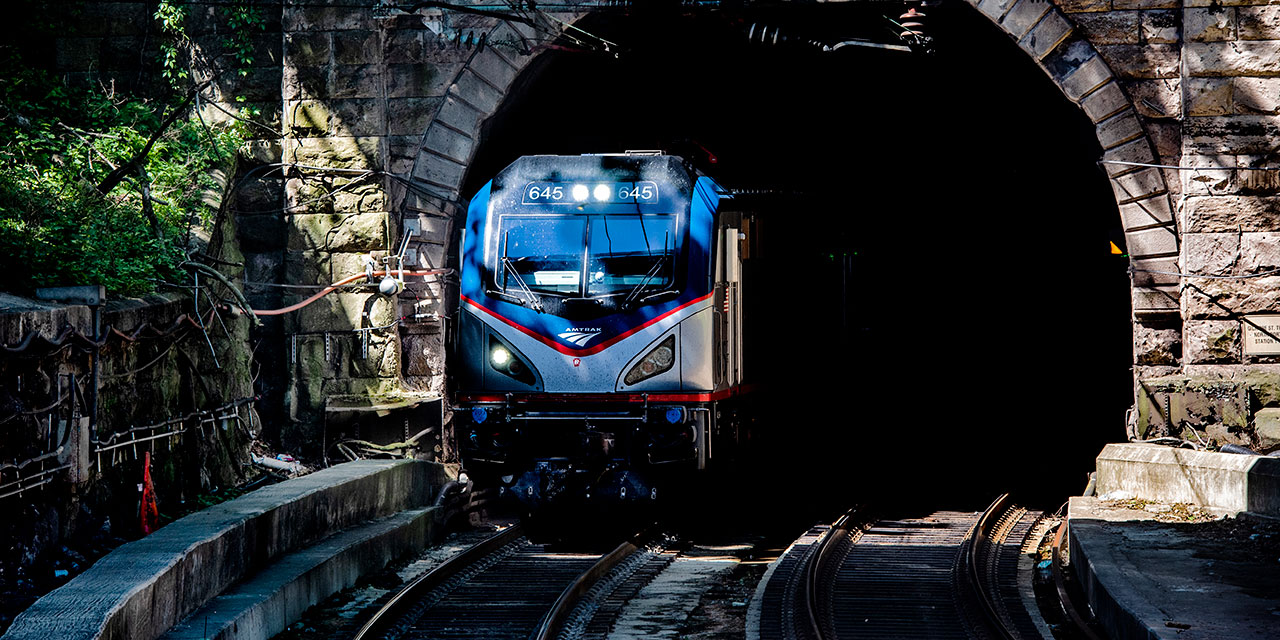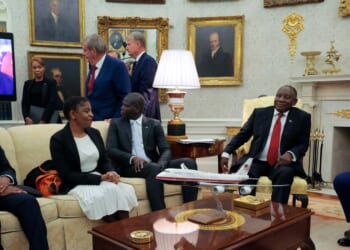
Americans who live in and travel through the Northeast Corridor, from Washington, D.C., to Philadelphia, New York, and Boston, face frequent reminders that their transportation options are not commensurate with the region’s population density and economic importance. Northeast travelers can drive or take an intercity bus on the heavily congested I-95, which is being continually upgraded by eager state transportation departments (though congestion almost always rebounds). Better-off travelers can fly, but many airports are beset by delays caused in part by a lack of air traffic controllers and prohibitively expensive equipment upgrades.
Trains should be the better option, given the relatively short distances between cities. Unfortunately, the exigencies of politics and the low share of total trips in the corridor that trains represent have kept the system from playing a greater role. Train riders use the Northeast Corridor rail system (NEC), which consists of a 457-mile main line from Washington to Boston, plus branches from Philadelphia to Harrisburg and from New Haven to Hartford and Springfield. It is owned by Amtrak and three regional transit agencies and operated by Amtrak and eight regional agencies.
Finally, a reason to check your email.
Sign up for our free newsletter today.
But the NEC is antiquated. Much of its infrastructure dates to the early twentieth—or even late nineteenth—century, slowing train schedules and causing frequent delays.
The system has benefited from upgrades—most recently those supplied by the 2021 Bipartisan Infrastructure Law. The rail operators agreed in 2021 on a long-term plan, called Connect NEC 2035, to “achieve significant progress on improving service and eliminating the state-of-good-repair (SOGR) backlog, while keeping this critical system running safely and reliably.” The estimated cost: $117 billion, in 2020 dollars, over a 15-year period—and likely much more when accounting for inflation.
Unfortunately, there is no realistic funding source for these upgrades beyond the federal and state governments—an unlikely prospect, given the current political balance in Washington and the limited fiscal capacity of many states.
Doubts about Connect NEC 2035 have sparked interest among rail advocates in a recent report from the Transit Costs Project (TCP), affiliated with New York University’s Marron Institute of Urban Management. It asserts that “an infrastructure program totaling about $12.5 billion and new high-speed trainsets costing about $4.5 billion, both in 2024 prices, are enough to build a high-speed rail network permitting trains to reduce the trip times on the Boston-New York and New York-Washington segments. . . . The capacity we plan on permits high-speed trains to run on the NEC every 10 minutes around New York, and every 15 minutes near Boston and Washington.”
The TCP report is not an exact apples-to-apples comparison with Connect NEC 2035. It excludes state-of-good-repair projects and focuses instead on identifying a program of genuine speed and reliability improvements. It also omits the Penn Station Expansion and Reconstruction projects—which Connect NEC 2035 estimates will cost $17.6 billion in 2020 dollars—on the grounds that they are unnecessary. (The Trump administration recently assumed control over these two long-languishing projects.)
TCP’s proposal, of course, has not been vetted by the transportation agencies. Transportation engineers are typically conservative in their feasibility estimates. Still, as blogger Matthew Yglesias is right to note, if the TCP plan proves feasible, it appears to be well within the financial reach of the state and D.C. governments, especially considering the level of federal aid they could reasonably expect.
Yglesias also observes that “the proposal involves a lot of reorganization of commuter rail services.” That’s an understatement. The plan would likely require carving off Amtrak’s NEC operations and those of the commuter railroads to create a new entity to coordinate train operations. This would entail significant legal complexity, as each transit agency carries bonded debt and operates under different labor agreements.
Then there are the political challenges. Relations between Amtrak and the commuter railroads—and among the commuter railroads themselves—are often contentious. All are competing for limited infrastructure capacity, and prioritizing one operator’s needs often means delaying another’s trains.
For the TCP plan to succeed, the president, Congress, and governors in the affected states would all need to work together. It’s possible, as something similar happened once before under President Dwight Eisenhower, when Congress unleashed a gusher of federal money to build the Interstate Highway System. But in Amtrak’s 55-year history, the Northeast Corridor has consistently struggled to attract sustained investment. As long as far more people drive on I-95 than take the train, roads will continue to dominate the political agenda.
Unfortunately, train travel won’t attract more riders until it becomes faster, more frequent, and more reliable. That won’t happen without major investment and structural reform. The dilemma isn’t new—and it still hasn’t been solved.
Photo by Bill O’Leary/The Washington Post via Getty Images
City Journal is a publication of the Manhattan Institute for Policy Research (MI), a leading free-market think tank. Are you interested in supporting the magazine? As a 501(c)(3) nonprofit, donations in support of MI and City Journal are fully tax-deductible as provided by law (EIN #13-2912529).
Source link

















